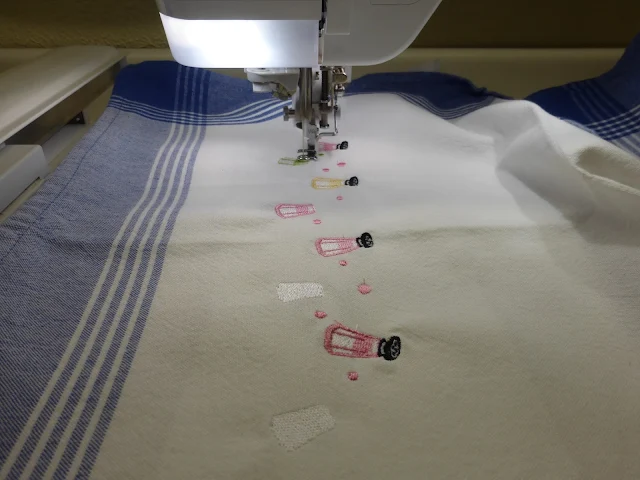 |
| The Croissant is a frozen delight that you bake when needed, the strawberry preserves are included. (QVC) |
The above towel, 100% cotton has been washed and pressed. I used a press on sticky stabilizer hooped in the magnetic monster hoop and floated a medium weight tear away behind because although the embroidery is not dense in and of itself but the stitching is quite dense. The tear away came off cleanly, the sticky not as easily. A stable woven fabric is the ideal structure for this type of work. I like to make little gift baskets to new neighbors, special occasions for friends and for myself. One or two embroidered kitchen towels provide the ideal background for the gift.
 |
| This is the machine stitching out little dancing salt and peppers. |
- I think I will hoop designs like this in the traditional way from this point. Because the dense stitching is spaced with equal blank/non-embroidered space, I needed to sit at attention while the design worked to keep the fabric secure to the sticky stabilizer. A tightly hooped fabric would eliminate that step.
- Threads. On the Baby Lock Facebook sites there is always much discussion about thread brands. So far, knock-on-wood, I have used Sulky, Madiera, Isacord, Superior, and a couple others whose labels have disappeared. My only problem was with one Sulky, I think it was older, perhaps too dry and it shredded up in the thread take-up race.
- I have also noticed that embroidery speed does affect some threads. Too slow and it will make some uneven stitches, too fast you may get puckering or thread breakage. Fortunately, the Destiny (and several other Baby Lock embroidery machines) have a setting page where you can adjust the speed to accommodate your needs.
PS: I love my Featherweight too.
Comments